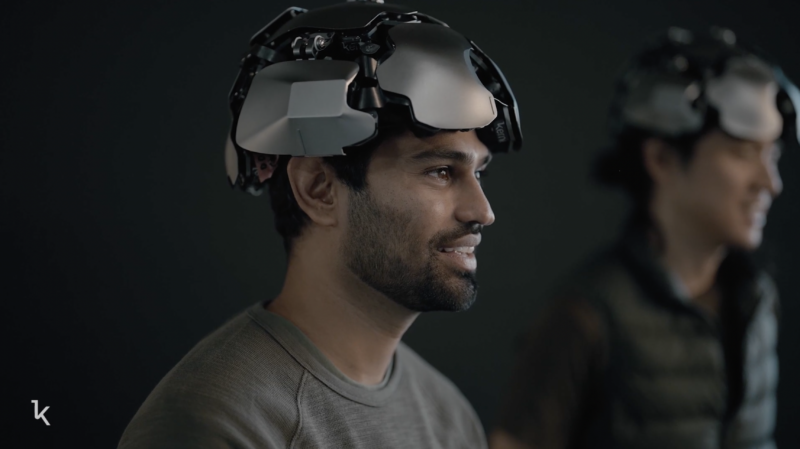Psychedelic therapy is gaining ground in the psychiatric and medical community. After what was essentially a ban on scientific study of hallucinogenic compounds for over three decades, new data are showing promising results in several areas such as mental health, smoking cessation, and addiction.
One of the leading biopharmaceutical companies in psychedelic research, Cybin Inc., announced on Jan. 28 key highlights from the completed feasibility study conducted by its partner Kernel, evaluating Kernel’s Flow wearable technology to measure ketamine’s psychedelic effect on cerebral cortex hemodynamics. Results from the study are intended to inform the future pathway for this program.
“The results from the feasibility study are very promising and provide further insights into the potential of this cutting-edge wearable technology to quantify neural activity and changes in brain biomarkers during the administration of psychedelics,” said Doug Drysdale, Chief Executive Officer of Cybin. The possibility of using this technology to develop a predictive tool to aid in identifying appropriate candidates for psychedelic-based therapy is also quite exciting, as is the convenience of a portable device, which could lend itself to more widespread use in clinical settings.”
“Looking ahead, we remain focused on expanding our scientific understanding of the effects and mechanisms of action of psychedelics on the brain – all with the ultimate goal of developing safe and effective treatments for a range of mental health conditions,” concluded Drysdale.
Key Findings from the Feasibility Study:
- Provided important proof-of-principle for Kernel Flow as a portable functional system that provides real-time measurements of blood oxygenation changes in the brain associated with neural activity using Time Domain Near Infrared Spectroscopy (“TD-fNIRS”).
- Demonstrated ketamine-induced changes to functional brain biomarkers associated with potential therapeutic effects, including alterations in cortical function associated with psychedelic experiences.
- Ketamine led to a brain-wide reduction in the fractional amplitude of low frequency fluctuations (“fALFF”) and a decrease in the global brain connectivity of the prefrontal region compared to saline. It has been suggested that fALFF is of particular functional importance within the default mode network, which has been shown to be modulated by psychedelics and is associated with a range of neuropsychiatric conditions.
- A model combining neural and physiological metrics successfully predicted mystical experience scores on Revised Mystical Experience Questionnaire, which has been shown in previous research to mediate reductions in depressive symptomatology.
- Demonstrated reliable physiological measurements of pulse rate (“PR”) and pulse rate variability (“PRV”) extracted from TD-fNIRS recordings that match those obtained from commercial external photoplethysmography sensors, thus rendering the use of external sensors to measure cardiac activity unnecessary in future experiments.
- Ketamine led to increased PR, decreased PRV, increased absolute concentrations of oxy-hemoglobin and decreased deoxy-hemoglobin concentrations, and elevated electrodermal activity (measured by an external sensor), providing further physiological measures of the effects of the ketamine doses administered in the study.
“This study can be regarded as an important step toward larger-scale clinical studies using Kernel Flow to quantify the impact of psychedelics, or other neuroactive substances and central nervous system drugs, on the brain,” said Bryan Johnson, Founder and Chief Executive Officer of Kernel. “The feasibility study demonstrated the successful application of the portable Kernel Flow neuroimaging system to measure effects of the psychoactive substance ketamine on brain hemodynamics and provided preliminary evidence that a combination of neural and physiological metrics can track subjective mystical experiences.”
Feasibility Study Design
The study was a single-blind, placebo-controlled, non-randomized design with participants completing study visits roughly once a week for four weeks. The four study visits were always conducted in the same order: a screening visit, two dosing visits, and a follow-up phone call. Dosing visits were always placebo (saline, 0.9% NaCl) first and ketamine second, with the ketamine visit occurring one week (7.1±0.5 days, mean ±SD) after the saline visit. Ketamine and saline were administered via bolus intramuscular injection (deltoid muscle). Ketamine dosing was based on participant weight with a target of 0.75 mg/kg, up to the maximum dose of 60 mg. Two participants were administered the maximum dose. Participants included 15 healthy individuals who met eligibility criteria and consented to participation in the study. There were eight females and seven males, all 24-48 years old.
The main objective of the feasibility study was to evaluate a participant’s experience wearing Kernel Flow while in an altered state of consciousness following the administration of ketamine.
The feasibility study received U.S. Food and Drug Administration Investigational New Drug authorization in October 2021 and U.S. Institutional Review Board approval in January 2022.
As part of Cybin’s sponsorship of the feasibility study, the Company will retain an exclusive interest in any innovations that are discovered or developed through its independent analysis of the study findings.











